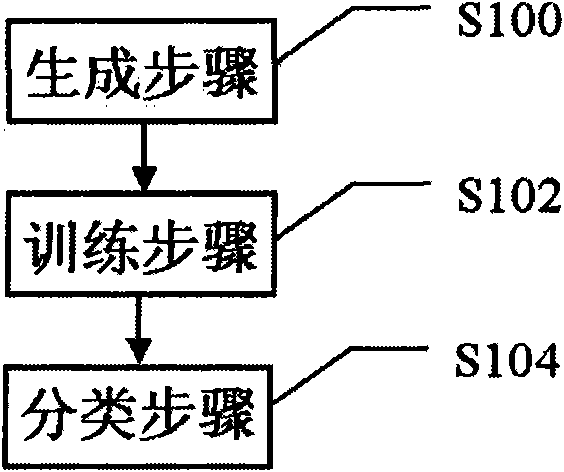Clustering method and device for support vector machine
A support vector machine and clustering method technology, applied in the field of clustering methods and devices, can solve problems such as discrete and discontinuous data points of scatter plots, and achieve the effect of easy transplantation and strong adaptability
- Summary
- Abstract
- Description
- Claims
- Application Information
AI Technical Summary
Problems solved by technology
Method used
Image
Examples
example 1
[0028] Example 1: Divider (identification of abnormal blood samples)
[0029] Clinically, patients with abnormal blood cells are usually screened out in routine blood examinations, and then blood and bone marrow smears are confirmed by microscopy. In blood cell analyzers based on flow cytometry, the scatter diagram of the test results usually has two configurations: using a combination of forward scattered light FSC and side scattered light SSC, or fluorescent FL and side scattered light The combination of SSC. The two-dimensional scatter plot distribution of blood samples from leukemia patients is significantly different from that of normal people. The scatter plot can be used to screen out such scatter plots with abnormal distribution patterns for the doctor to further comprehensively judge.
[0030] In this embodiment, a scattergram combining fluorescent FL and side-scattered light SSC is taken as an example to illustrate a two-class classification method for the shape recogni...
example 2
[0055] Example 2: Two-dimensional multi-classification (classification of routine blood white blood cells)
[0056] In clinical blood tests, white blood cells can be further divided into neutrophils, eosinophils, basophils, lymphocytes, and monocytes. Figure 5 It is a scatter chart of the blood cell test results of a normal person. It is clinically necessary to automatically classify and count the five types of white blood cells in the scatter chart.
[0057] Image 6 Described figure 1 The second step shown is the main process of the training step. By selecting training blood samples and manually adding training points, the support vector machine classification model is trained. The main process is as follows:
[0058] In step S600, browse the blood sample library and select a blood sample suitable for training the model. In step S602, it is judged whether a selected sample is used as a training sample. The principle followed can refer to the principle of selecting the blood sampl...
example 3
[0086] Example 3: Three-dimensional or high-dimensional classification
[0087] In order to further obtain various cell subgroups in blood cells (for example, lymphocytes can be further subdivided into T lymphocytes and B lymphocyte subgroups), more detection information needs to be obtained. Multicolor fluorescence analysis based on flow cytometry is usually used for analysis. At this time, multiple dimensions of detection information will be obtained.
[0088] Due to the characteristics of the support vector machine classifier, the method based on principal component analysis and support vector machine of this embodiment is more suitable for such high-dimensional signal clustering analysis.
[0089] Such as Figure 8 As shown, when there are three or more attributes that can be obtained for each blood cell that represent different characteristics of the cell, there are many ways to construct the input attributes of the support vector machine. Since support vector machines can ove...
PUM
 Login to View More
Login to View More Abstract
Description
Claims
Application Information
 Login to View More
Login to View More - R&D
- Intellectual Property
- Life Sciences
- Materials
- Tech Scout
- Unparalleled Data Quality
- Higher Quality Content
- 60% Fewer Hallucinations
Browse by: Latest US Patents, China's latest patents, Technical Efficacy Thesaurus, Application Domain, Technology Topic, Popular Technical Reports.
© 2025 PatSnap. All rights reserved.Legal|Privacy policy|Modern Slavery Act Transparency Statement|Sitemap|About US| Contact US: help@patsnap.com



